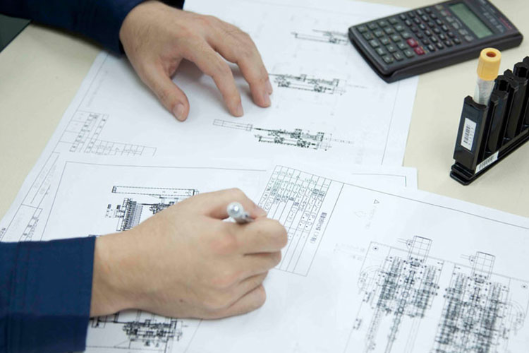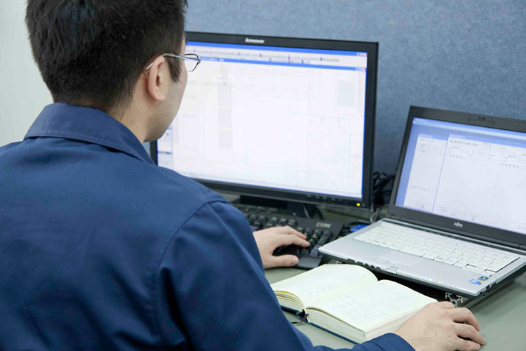Product Information
Development staff point of view
Product Design
As long as customers continue to request ambitious projects,
DS will be ready to respond.
-
Development and Design to meet your needs
There are many variables to deal with since the IDS systems are used to connect Pre-analytical processing with analyzers from many manufacturers. This extends to specimen container sizes and delivery methods.
In most cases, we will be able to use our standard modules when designing a system. However, there are also requests to expand our capabilities with customized features. If these capabilities can be accomplished through the modification of existing design, the team responsible for the module will lead the additional development. The Technical department of the Research and Development team is responsible for large scale hardware customization and new product design. We will often meet with customers very early in the sales cycle to gain a better understanding of the desired capabilities. This collaboration is vital to our success.
Specifically, the single tube transport is our standard system, which can connect to a rack transport system or a analyzer personality rack system. Moreover, we can double the throughput of the system by improving the aliquot mechanism from a standard configuration to a 4 axis configuration, oriented table side. This is an example of a newly developed mechanism.
It seems as though this type of work is impossible for many other companies. However, at IDS, we have the belief that we should embrace these challenging customer requests. We do not hesitate to react to these customer requests; and if we are involved early in the sales process, we can often deliver the customized product with no delay. -
The accumulation of many challenges
has led to the company’s capabilitiesIDS products automate the manual tasks performed by laboratory personnel. Early in the development cycle, I will often start with evaluating how a machine could reproduce certain tasks. This period of evaluation is perhaps the most important phase of the development cycle, with improved efficiency being the key development theme. The next step in the development cycle is the generation of CAD models. Although it may look complex, it is not particularly difficult work. This computerization allows us to easily include any changes that occur in the commercialization process. In combination with our integrated manufacturing, we can respond quickly to any changes.

Although the “Customization” of products is often done for a particular customer, if the feature becomes more popular, we can include it into our standard units.
Moreover, in the course of development, we will make trial calculations of the timing of all the steps performed by the module. Although it is daunting task, it becomes the basis for the control systems and their development. All of this information is retained and utilized for future development projects. This data may also be used in Patent Applications.
Therefore, each system is an opportunity to expand our knowledge and capabilities. Each customer’s needs are unique, providing limitless opportunities to learn. If the effectiveness of proposed solution is in doubt, I can consult with my team mates and get immediate confirmation. It is this accumulation of technical and practical knowledge that make IDS the leader in the marketplace.